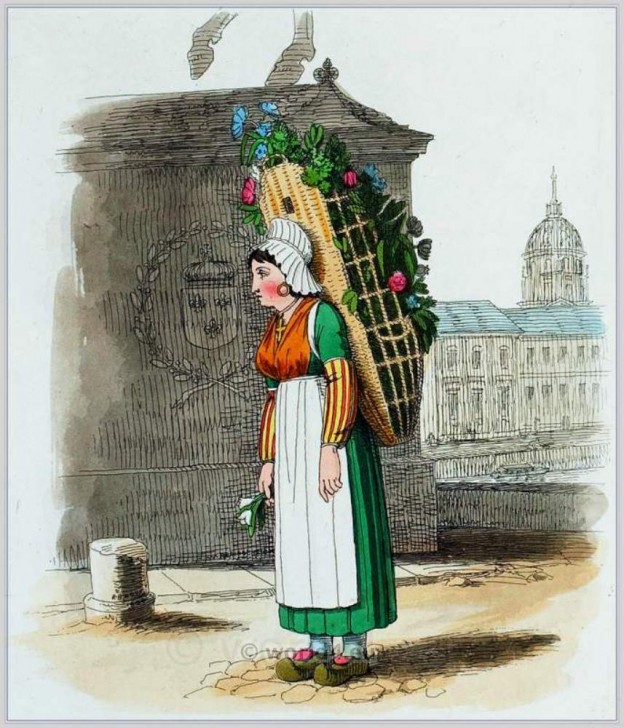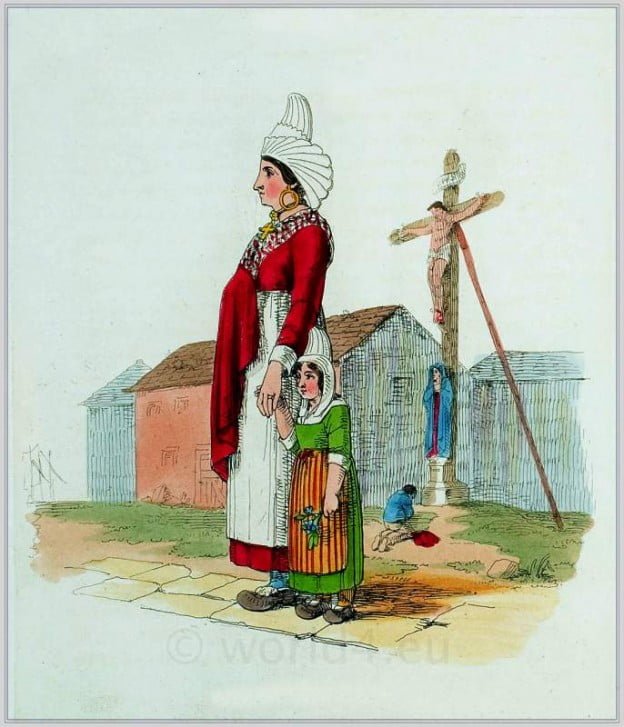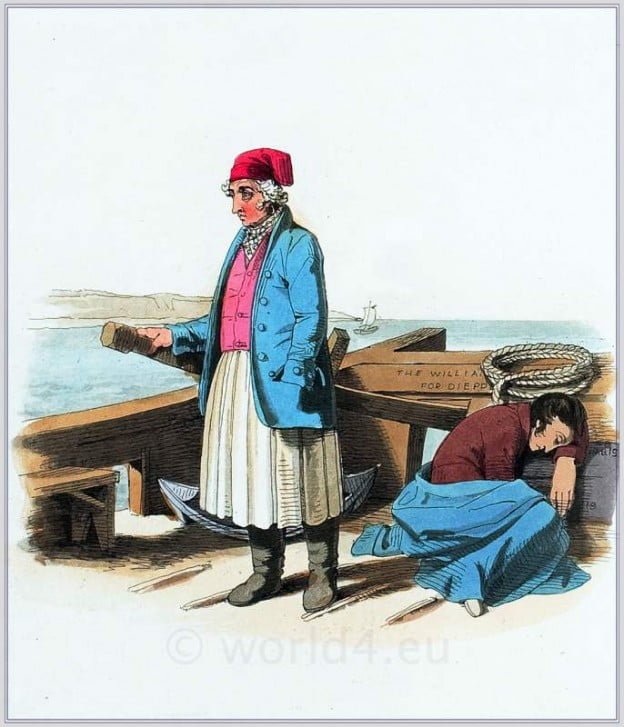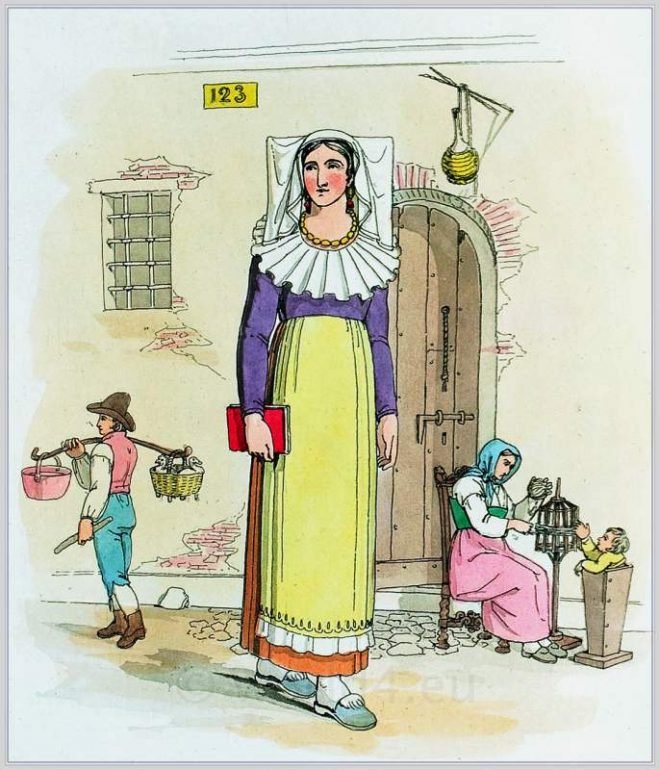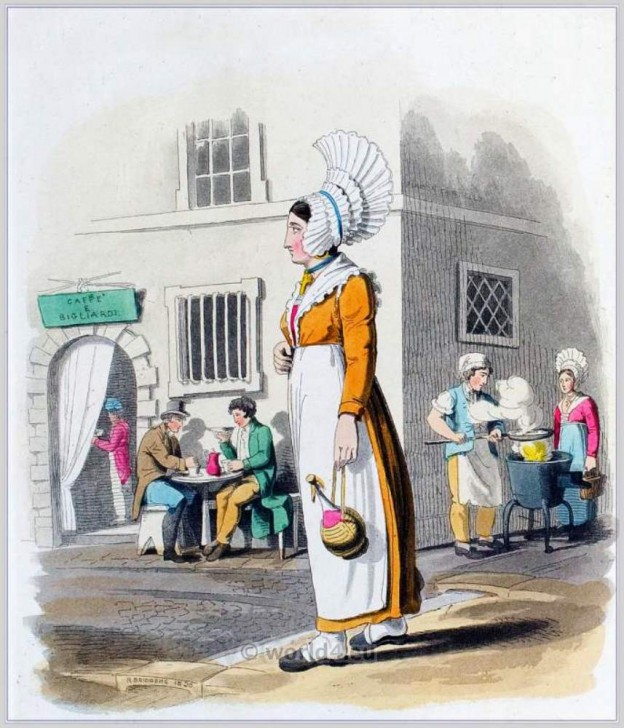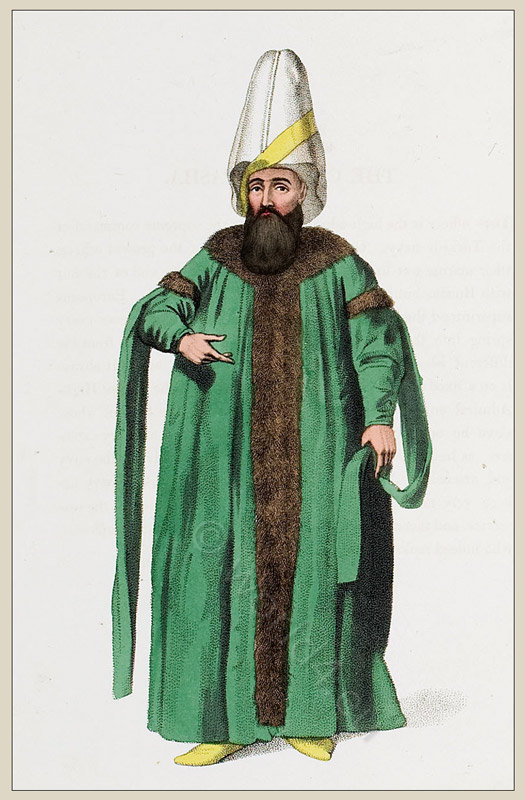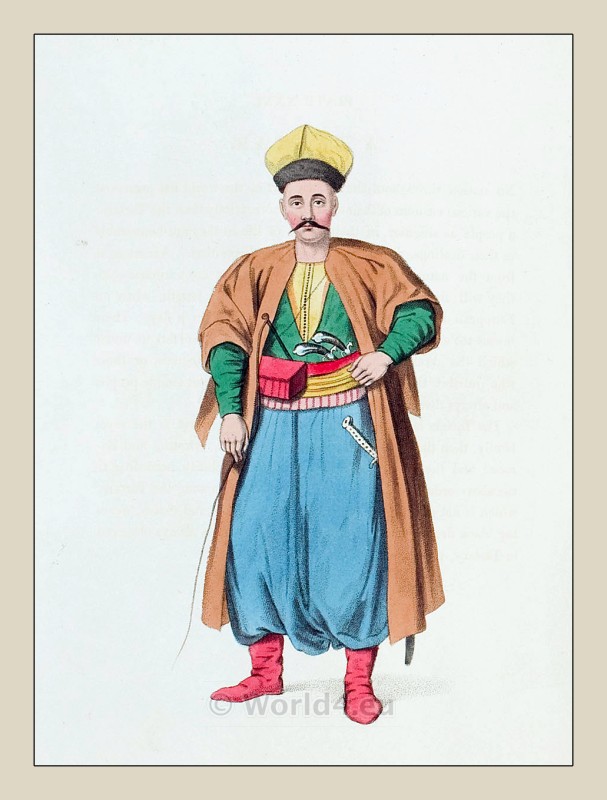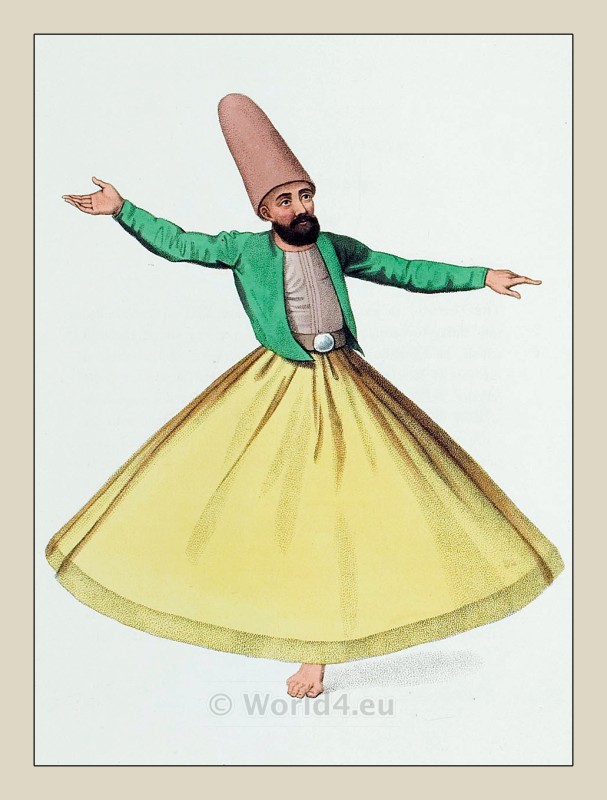This way of carrying loads is common in France. A wooden frame is secured to the shoulders, and rests upon the whole surface of the back to the hips.
Coshois at Dieppe, Seine-Maritime. Sketches Illustrative 1821.
THE entry into France by Dieppe is particularly striking, it resembles very much an old English town.
French pilot in large petticoats, boots, gay colored caps and earrings.
The packets from Brighton to Dieppe, when in sight of the harbour, are taken possession of by French pilots
A Pilgrim going to Loretto. Shrine of the Holy House.
The shrines of Loreto and St. James of Gallicia cannot, like that of St. Thomas of Becket at Canterbury in former times, show the stones worn away by the devout kisses of the modern far-wandering penitent.
A female of Vercelli with peculiar head-dress. Italy Piedmont 1821.
A female of Vercelli, Piedmontese. This one of the most peculiar head-dresses belonging to the lower orders in Italy.
Donna di Torino. Woman of Turin. Italian popular costume of 1821.
AT Turin the dress of the females is very remarkable. The elaborate and various forms of their caps are singular and picturesque.
Fishermen at Boulogne-sur-Mer. Département Pas-de-Calais.
The peasantry, the fishermen, the postillions, all classes below the bourgeoisie, are now, as they were formerly, dressed in heavy, cumbrous woolen cloth.
The Capitan Pasha, Derya Bey. Admiral of the Turkish Navy.
Kaptan Pasha (Ottoman قاپودان پاشا; also Kaptanpaşa / کاپیتان پاشا; Kapudan i Derya / قاپودان دریا Kaptan-i Derya / کاپیتان دریا) was the highest military rank of the Ottoman Navy.
A Tatar. Ottoman Empire 1800.
The Tatars have different degrees of rank. Historical Ottoman Empire officials and ethnic groups.
A Mevlevi Tariqa Dervish. Historical Ottoman Empire officials.
The founder Dschalal ad-Din Muhammad Rumi. When the first Dervish comes opposite the Scheik he makes a salutation, and, passing on, begins the dance.

